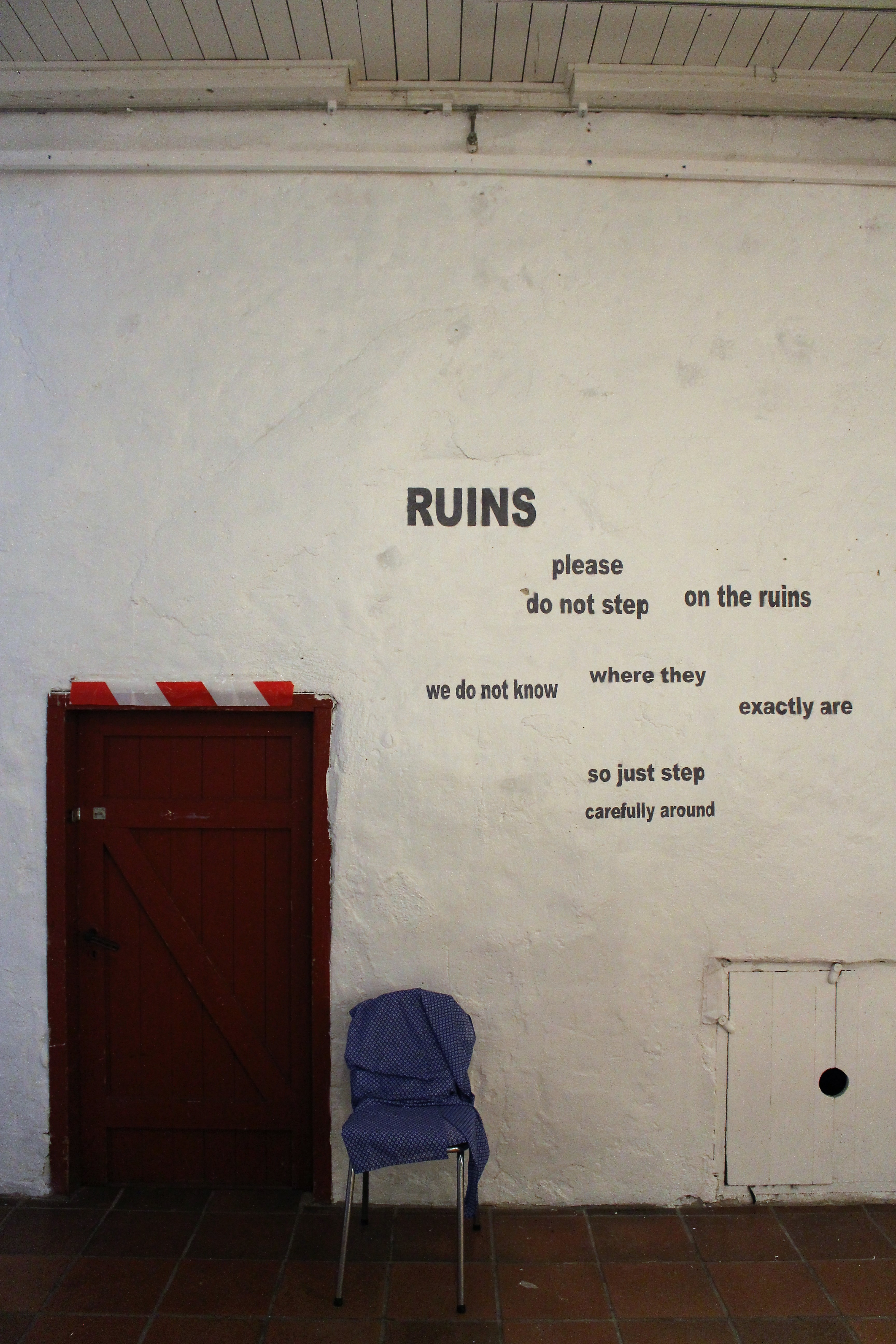Through this experience, ruins as a metaphor transformed and expanded in several directions, and lost, for me, its original negative connotation. If something is a never-ending process, if we have always built upon ruins, then we always will be able to. We will always have the possibility to start over again, but at the same time not through rebuilding – here the expanded understanding of ruins as a metaphor made me realise that rebuilding as a concept had for me lost its purpose. Rebuilding in a sense requires making a copy of what has been destroyed, a copy that never will be enough. Building upon something takes history into consideration, but at the same time makes it possible to shape the content according to what is true here and now and include what we hope for the future.
- contents
-
navigation
-
abstract
Does the complexity of a work of art, composed of diverging narratives, present a possibility to connect to what we do not grasp? In this exposition I present interweaving as a compositional technique and dramaturgical strategy, through aspects of the creative process connected to and elements of three installations – part of a series called Ruins. The installations combine different aspects of storytelling, participatory strategies, media, and forms of expression. I believe that interweaving different and diverging fragments, allowing audience members to create their own performance dramaturgy and experience, can create an understanding of others and their experience. In that lies the possibility for a shared story – a collective story. Interweaving as a method is also present in the dramaturgy of the text itself – building up to an audio-visual representation of those elements and the written text. In this way, I hope the exposition lets the reader and me both investigate interweaving as a technique and experience it.
- Joanna Magierecka - Building upon Ruins – Interweaving Metaphors - 2023
- Meta
- Comments
- Terms

